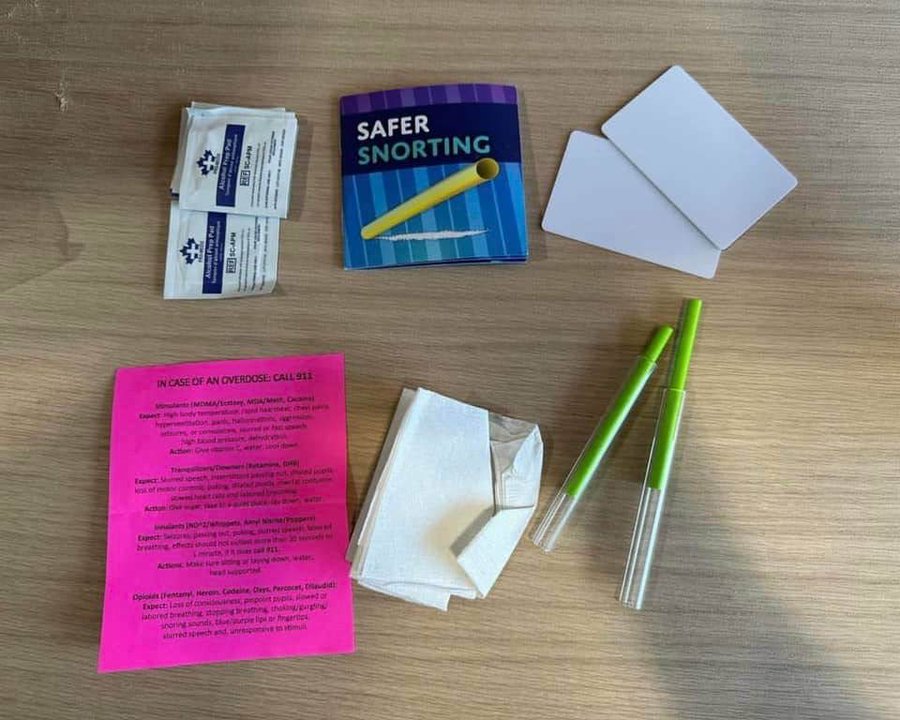
VANCOUVER ISLAND, British Columbia (LifeSiteNews) — High school students in British Columbia were provided with tools to snort hard drugs, including cocaine, after a presentation at the school.
On May 20, B.C.-based documentary filmmaker Aaron Gunn exposed Cowichan Valley High School when he tweeted a picture of a kit labeled “safer snorting” containing tools for taking cocaine and other hard drugs that was passed out to students.
When I was in high school, we heard from powerful guest speakers on why doing hard drugs had very serious (and potentially deadly) consequences.
Today in British Columbia, (and, in this specific case, a high school in the Cowichan Valley) they are handing out “safer snorting”… pic.twitter.com/T9WX4KZQI9
— Aaron Gunn (@AaronGunn) May 21, 2023
“When I was in high school, we heard from powerful guest speakers on why doing hard drugs had very serious (and potentially deadly) consequences,” Gunn wrote.
“Today in British Columbia, (and, in this specific case, a high school in the Cowichan Valley), they are handing out ‘safer snorting’ kits to children as young as 15,” he continued.
The Cowichan Valley School District has tried to distance itself from the incident by stating on Twitter that the kits had been left by an outside presenter and not provided by school staff.
We were recently made aware of materials that were left at one of our school sites from a third-party harm reduction and drug addiction presentation that we do not consider school or age appropriate.
1/3
— Cowichan Valley School District (@CowichanSchools) May 21, 2023
“We were recently made aware of materials that were left at one of our school sites from a third-party harm reduction and drug addiction presentation that we do not consider school or age appropriate,” the statement read.
“While the District does support harm reduction as a well-researched and effective method of addressing the ongoing opioid crisis and conversations around drugs and drug addiction, we aim to ensure that the teachings related to it are appropriate for our students,” it continued.
“Materials left by this third party did not meet this threshold, and for that we apologize to our community,” the statement added, promising that the district is launching an investigation into the incident.
Drug use across Canada, and especially in British Columbia, has increased in recent years. In April, British Columbia broke new overdose records one month after decriminalizing all drugs.
B.C. tragically set three new overdose records in March, the second month after Prime Minister Justin Trudeau’s federal government allowed the province to decriminalize all drugs starting February 1, 2023.
In March, B.C. saw the most overdose calls ever recorded in one day (205), the highest 30-day overdose call average (119.9), and the most days in a row where paramedics were called to 100 or more such calls (19).
In 2016, the drug epidemic was declared a public health emergency after statistics showed that 474 British Columbians had died from drug overdoses in 2015. In 2022, that number increased nearly five-fold at just under 2,300 lives lost.
In a newly released documentary “Canada Is Dying,” Gunn examines the increased drug use across Canada, especially in B.C.
According to Gunn, the province’s increasing drug problem is a result of “safer supply” and “harm reduction” initiatives that attempt to make drug use safer instead of eradicating it. However, Gunn argued that such initiatives have backfired and resulted in increased drug use.
Gunn is not unsupported in this belief. Statistics from across North America confirm his view.
For example, when Oregon decriminalized all drugs in late 2020 and in 2021, the state saw a whopping 52 percent increase in opioid-related deaths, jumping from 472 before decriminalization to 745 after decriminalization.
Similar trends have been observed in other jurisdictions that have opted for a soft-on-crime approach to drugs by law enforcement, including San Francisco, Los Angeles, and Seattle.

